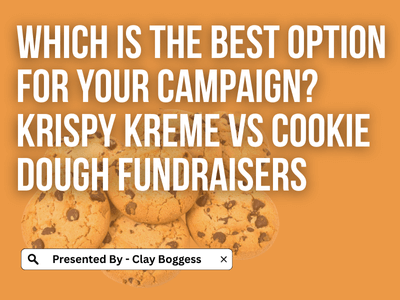
Foster steady support and build closer relationships with school donors than ever.
To succeed in fundraising, you need to maintain energy and enthusiasm among supporters in the community.
Engagement is significant for schools, where direct interaction between your organization and your supporters is timebound—as kids graduate, their parents will likely lose touch with your school.
But this doesn’t have to be the case. There are natural opportunities to foster longer relationships and emotional connections with supporters in many contexts, like independent schools and sports and music programs.
With an energized community that considers your school a fixture of their lives, you can foster steady donor support and closer relationships than ever. How? Let’s take a look at five fundamental donor engagement tips.
1. Understand your school’s community.
How effectively has your school engaged its community of families, donors, and sponsors in the past? What strategies and events were the most successful, and with which groups? What are the different ways that you measure fundraising success—dollars raised, event sign-ups, volunteer acquisition?
Answer these essential questions before you begin building a more intentional engagement approach.
Ensure your school has the necessary data technology to gather and analyze information. A central database or constituent relationship management (CRM) system will be essential.
With a database of helpful engagement insights, you’ll have a solid foundation to chart your strategy. Identify trends in your data and make connections—which years were your best for fundraising? Why and who did your strategies do the best job at engaging? Having organized data will make analysis a breeze.
2. Get them truly (and tangibly) involved.
Sending emails and newsletters is a tried-and-true way to stay in touch, but you can go further to keep supporters involved with your school. After all, as a fixture of the community, your school is about building connections. Look for ways to engage supporters more directly.
- Host product fundraisers. It doesn’t get more tangible than branded merchandise or classic school fundraising products like cookie dough and popcorn.
- Plan peer-to-peer fundraising events. Walkathons, dance marathons, 5Ks, and more are excellent opportunities to bring the community together in person. Use a pledge-based fundraiser to gather donations from friends and family.
- Invite donors to participate in feasibility studies. You'll conduct a feasibility study if your independent school plans a significant expansion or other project. Invite your highest-impact donors to weigh in on your plans and offer their input. Consider applying this tactic to other lower-stakes plans, not just capital campaigns.
As you learn more about your audience, you can tailor your events and requests more effectively to their interests, driving more fundraising engagement.
3. Regularly seek donor input.
The best way to learn something is to ask! Ask your school’s donors and community partners for feedback on your campaigns, events, and goals.
Surveys are an invaluable (and often underutilized) tool. Develop a few different variations, such as:
- Post-event surveys
- Annual or general surveys alongside or shortly after an annual appeal.
- “Get to know you” surveys to learn more about donor interests and motivations.
Save and study this information. A central CRM will be essential for distilling what can quickly become an overwhelming amount of information into digestible and actionable reports. Then, actively reference it as you plan new campaigns and events.
Active feedback collection will help you improve your strategies and engage your supporters, but asking for feedback shows that you value it—a win-win!
For schools with dedicated development programs, like many independent schools, meetings between donors and development officers or school leadership also work to gather input and encourage involvement. Many schools actively seek input this way before significant fundraising campaigns.
4. Don’t just host events
Classic school events are beloved additions to the calendar, but they can get old. Of course, you can (and should!) still host classic spring flings school auctions, bake sales, fall festivals, and holiday markets, but try to go the extra mile.
Remember, events are fantastic opportunities to build connections in a time when so much interaction occurs online.
Take the opportunity to show your school’s hard work in action, recruit volunteers, mingle, get input, encourage conversation, and invite involvement in planning your subsequent events. Remember to explicitly connect everything to your school’s goals and mission—educating and empowering your students.
5. Tell compelling stories about your school.
People connect best with stories, especially those directly touching their communities and interests.
Nonprofit organizations create official cases for support when planning major and marketing campaigns. A case for support tells a compelling, targeted story about an organization’s mission, goals, impact, and community. Its core talking points and arguments shape the nonprofit's messaging for that particular campaign or initiative.
Take a page from the nonprofit fundraising playbook and try creating a case for support for your school’s next sales campaign!
To start, look at your audience as discussed in Tip #1. Gather real stories of their involvement through feedback collection. Track the real impact of improvements to your school that donations help fund.
A mix of storytelling strategies, actual details, and numbers can paint an exciting picture and make it easy for your supporters to want to give.
Schools have a leg-up over many other organizations regarding fundraising because of their close relationships with their communities. Without deepening those relationships and engaging your donors, you could miss valuable giving opportunities.
Independent schools with larger budgets and fundraising bases may partner with education fundraising consultants to develop strategies and gain a deeper understanding of their audiences. But any school can make improvements on its own, too. By following these tactics and adapting them to your unique needs, goals, and community, you can position your school as a meaningful part of your supporters’ lives—a place for education, events, and connection.
Author Bio
Clay Boggess has been designing fundraising programs for schools and various nonprofit organizations throughout the US since 1999. He's helped administrators, teachers, and outside support entities such as PTAs and PTOs raise millions of dollars. Clay is an owner and partner at Big Fundraising Ideas.



